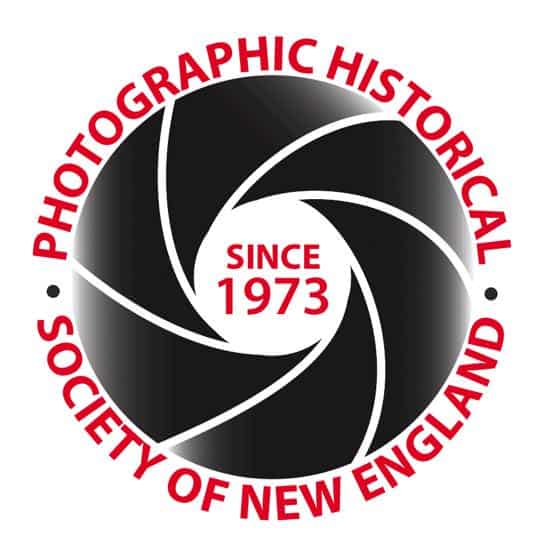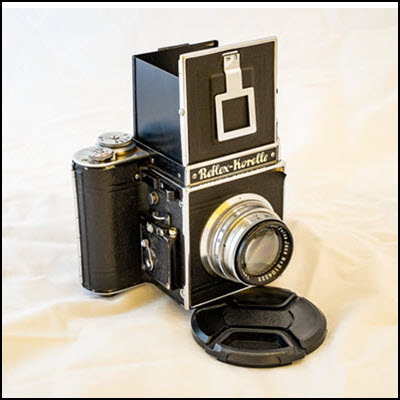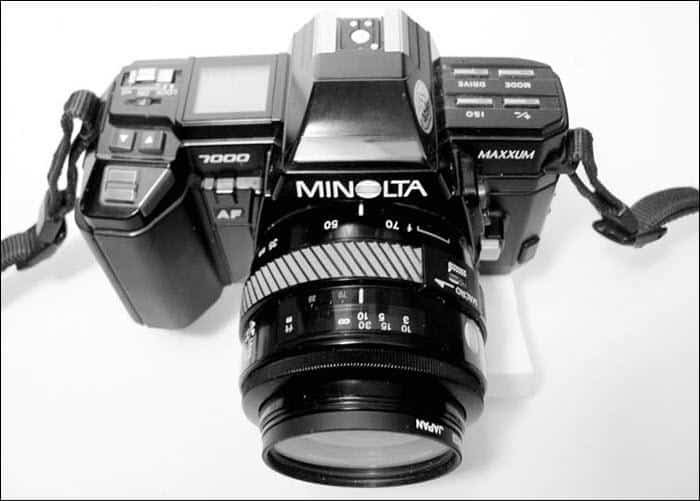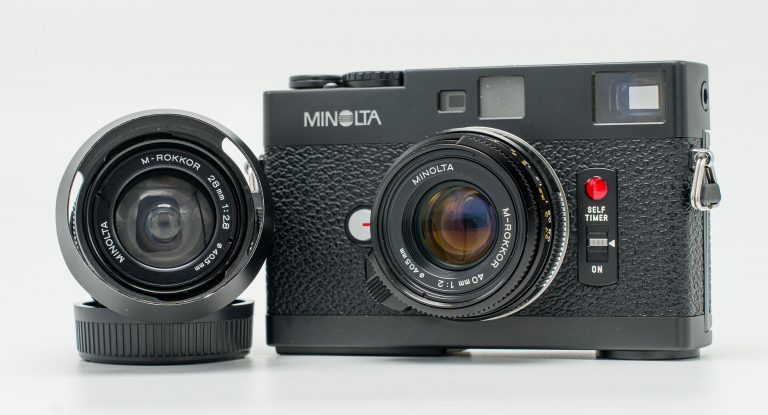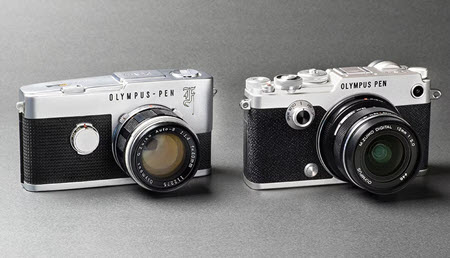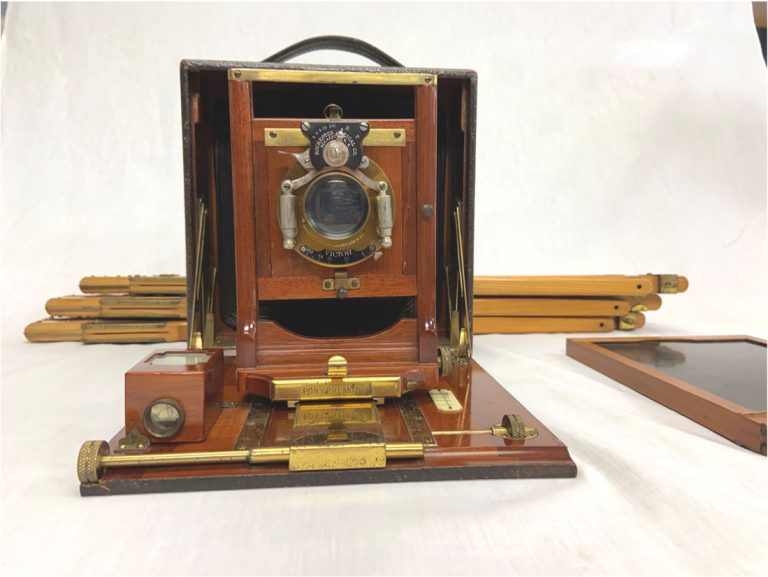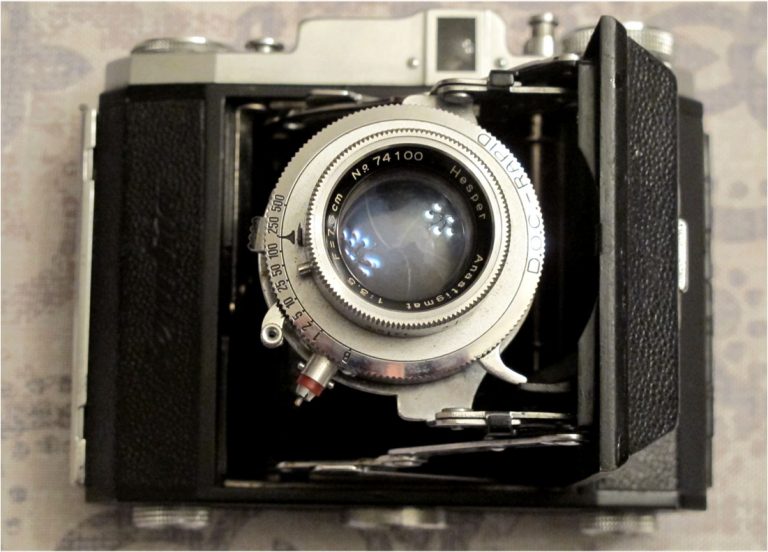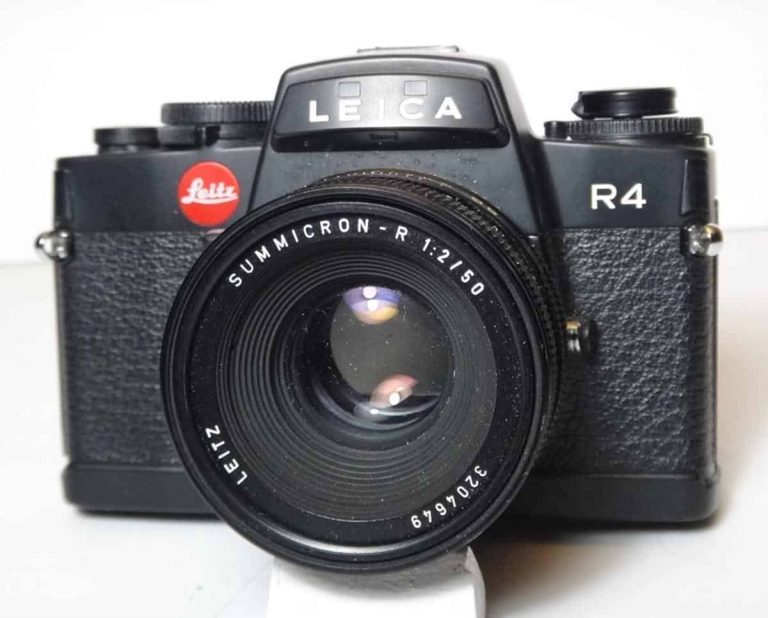The Dresden-designed and built Reflex Korelle was first marketed in 1935, shortly after Eichapfel’s Noviflex was announced. The latter failed within a few years. However, Franz Kochmann’s (1873-1956) firm, Franz Kochmann Fabrik Photographischer Apparate (1921-1938), had been building cameras for over 12 years, and the Reflex Korelle was very successful. The camera’s name, along with the firms that manufactured them, went through a number of changes and re-namings before the camera was discontinued in 1952.
The Reflex Korelle was a much-copied camera: the Agiflex (UK) and the Reflex Beauty (Japan) were knockoffs of the original. After it was discontinued, other versions like the Exakta 66 (horizontal), the Praktisix, the Pentacon Six, the Rittreck/Graflex Norita, and the Pentax 6×7, just to name a few, were descendants of the Reflex Korelle.
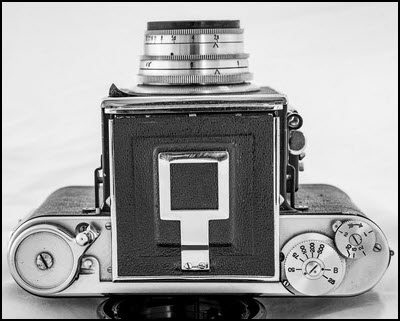
The photographs of this example (a Reflex Korelle II) show a fairly compact, T-shaped body with a mirror box, waist-level finder, 40.5mm threaded lens mount, with a hinged back with straight-line 120 film feeding from right to left. The camera back is plain, with a red window and an external sliding cover to avoid light leaks. The body is mostly steel with chrome trim and thin leatherette on the external surfaces. The horizontal cloth focal plane shutter has two shutter speed dials on the top right: 500, 200, 100, 75, 50, 25 and B; the smaller slow-speed dial has 10, 5, 2, 1, and 2 seconds; on the right-side of the mirror box is a self-timer.
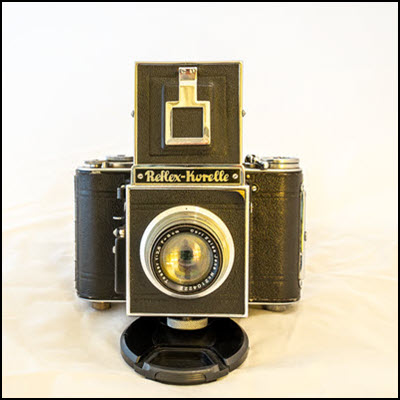
The shutter release above the self-timer is ingeniously simple. The internal mirror is spring-loaded in the down position. Press the shutter button and the mirror pops up; press all the way down and the shutter releases. Let go and the mirror drops down. For long exposures, use a cable release attachment adjacent to the shutter release. Don’t let go of the shutter release before the focal plane shutter finishes its journey from one side of the film aperture to the other side. The ‘A’ mark is the default for tripping the shutter; the ‘E’ mark starts the self-timer and lifts the mirror just prior to the shutter firing.
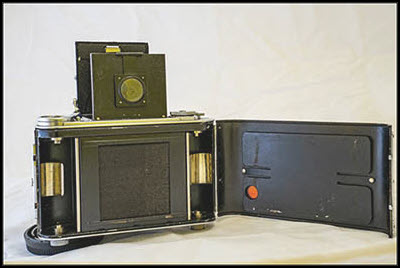
The waist-level finder opens with four metal leaves. The rear leaf has a magnifier which flips up and over to see the ground glass. When the finder leaves are closed, there is a sportsfinder that flips up on top, and a wire frame at the front of the mirror box can be withdrawn from the body. When closed, it seems to be part of the Reflex Korelle logo. Nifty!
In theory, loading film is simple. Open the back, use the spring-loaded retainers at the bottom of the camera body to insert the new roll of film on the right, then carefully thread it into the takeup spool on the left. Be sure the paper protecting the film is flat across the film plane (there is no pressure plate). Close the back, and slowly wind the film until you see the first numeral in the red window at the lower right corner of the back. When ready, close the window cover. There is a film exposure counter on the top left next to the waist level finder. It should read ‘1’ when everything is set just right.
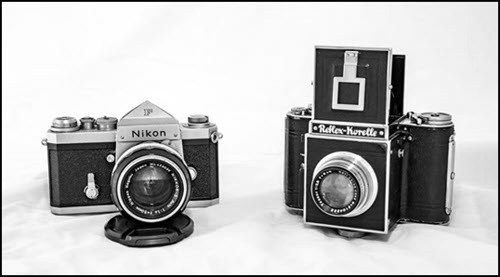
After releasing the shutter, the very nice folding crank on the top left side will both wind the next frame and set the shutter. That’s it; there are no batteries, flash connections, motor drives, built-in exposure meters, or display screens. The two film retainers on the camera bottom are balanced by the threaded retainer under the mirror box, which holds the ever-ready case, but also makes an almost-perfect tripod on a level surface.
Lenses
Reflex Korelle users had a wealth of lenses to choose from. No wide-angles, this being the era before retrofocus lenses were in vogue, but there were many good standard lenses, short teles, and a number of long telephotos. By the end of the 30s, some of the Zeiss lenses may have been coated, but most were probably uncoated. Find the listings on Camera-wiki. http://camera-wiki.org/wiki/Reflex-Korelle#Small_thread_mount
While researching this camera in more detail, I learned a little bit about Franz Kochmann. Kochmann was a German Jew, born in Dresden in 1873. His family appears to have been well-off, he was an art collector, and by 1921 he decided to start Franz Kochmann Fabrik photographischer Apparatehe in Dresden. While the company was thriving in the 1930s, by 1938 the Nazis expropriated his company, estate, possessions, and was not allowed to leave Germany. However, when the Netherlands were occupied by the Germans, Franz and his wife Clare made their way to Utrecht, where they survived during the war and stayed there after. For a time in the late 1940s and early 1950s, Franz worked at a camera company in Amsterdam, Vena, which created an inexpensive roll-film box camera, the Venaret, with an outward appearance not unlike the Reflex Korelle. Kochmann died from an automobile accident in 1956.
The companies associated with the Reflex Korelle:
Franz Kochmann Fabrik photographischer Apparate (1921 – 1938)
Korelle-Werk G. H. Brandtmann (1938 – 1948)
VEB WEFO (1948 – 1951)
VEB Welta-Kamerawerke (1951 – 1952)
What the heck…
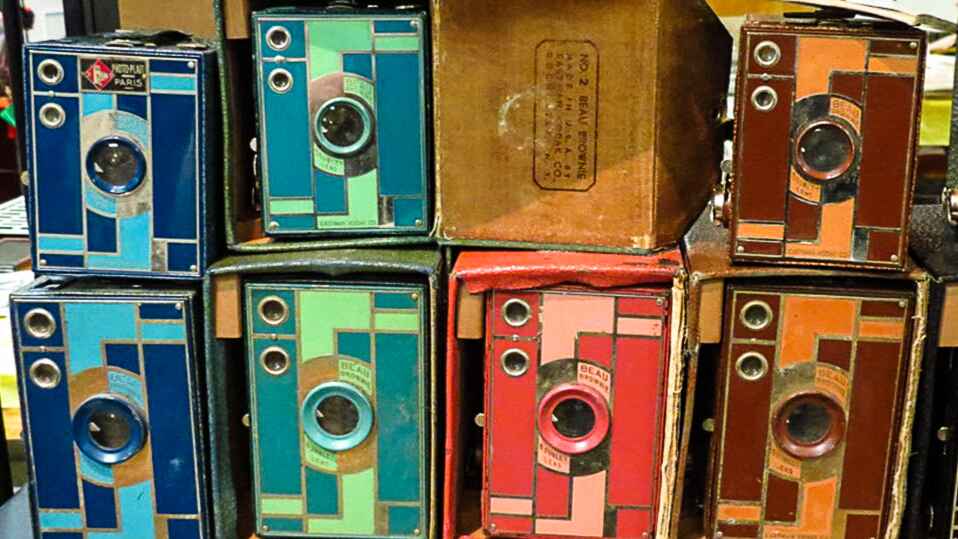
Are Those Even Cameras?!
Join the PHSNE Newsletter and learn more about photographic history and preservation. Already an expert? Come and share your collections and knowledge as we celebrate the history and advancement of photography.
